Figures & data
Table 1. Thermal properties assigned to different tissue types used for hyperthermia treatment planning. Values are based on [Citation42,Citation43].
Table 2. Electrical properties assigned to different tissue types at 70 MHz used for hyperthermia treatment planning. Values are based on Gabriel et al. [Citation5,Citation42,Citation43,Citation48]. Bold type denotes electrical conductivity values based on EPT [Citation32].
Table 3. An overview of the dielectric data sets used for optimisation (second row) and the dielectric data set on which the optimised antenna setting was applied (third row). Data sets are listed in Table 2. Results are depicted in Figures 1–4.
Figure 1. Tumour T90 (top) and T50 (bottom) in patients 1–5 for AMC-4 and AMC-8 system. The white bar represents the optimised case for properties based on literature values. Using the same antenna settings, the tumour temperature for different cases are computed and represented by other bars.
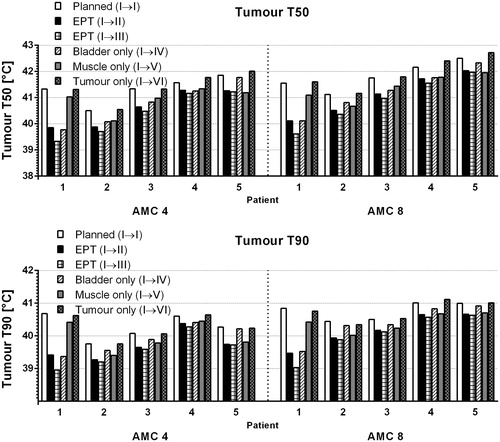
Figure 2. Tumour SAR in patients 1–5 for AMC-4 and AMC-8 system. The white bar represents the optimised case for properties based on literature values. Using the same antenna settings, the tumour temperatures for different cases are computed and represented by other bars.
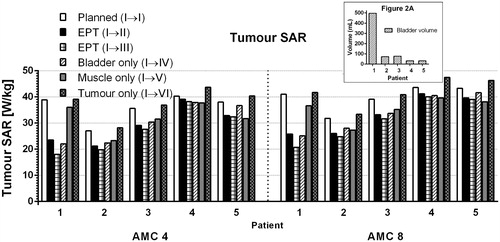
Figure 3. Tumour T90 in patients 1–5 for AMC-4 and AMC-8 system. The white bar represents the optimised case for properties based on literature values. The error bars represent the minimum and maximum tumour T90s when using highest and lowest conductivity values, respectively, as presented in case II (Table 2).
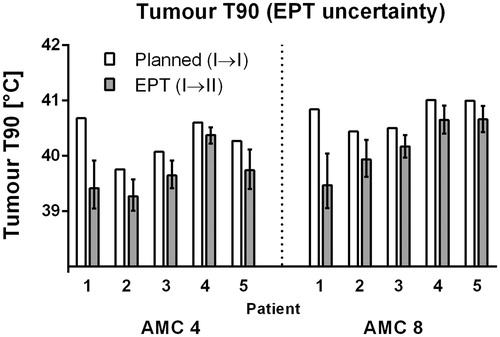
Figure 4. Tumour T90 for patients 1 (top) and 5 (bottom) for optimised cases with literature value (white) and for EPT-based conductivity values of muscle, cervical tumour and bladder filling (black). The other bars represent tumour T90 values for different values of muscle permittivity.
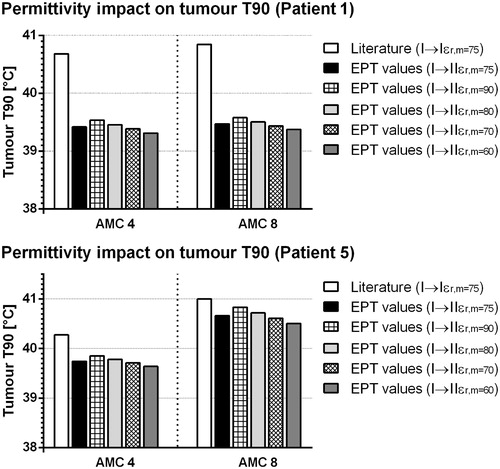
Figure 5. Tumour T90 for patients 1–5 based on literature values (white) and on EPT-based conductivity values (grey). The applied antenna settings were computed separately by temperature-based optimisation for both cases.
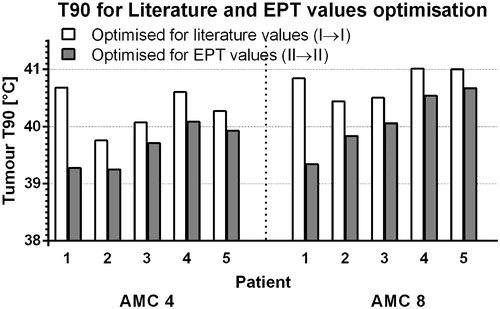
Figure 6. An example of the resulting temperature distribution of patient 1 corresponding to transverse slice (a) for the case, (b) planned with literature values (I→I), and (c) the case where the same antenna settings are applied on the EPT-based model (I→II). In (d) is shown the distribution resulting for temperature-based optimisation based on EPT model (II→II). (e–g) The corresponding SAR distributions are shown.

